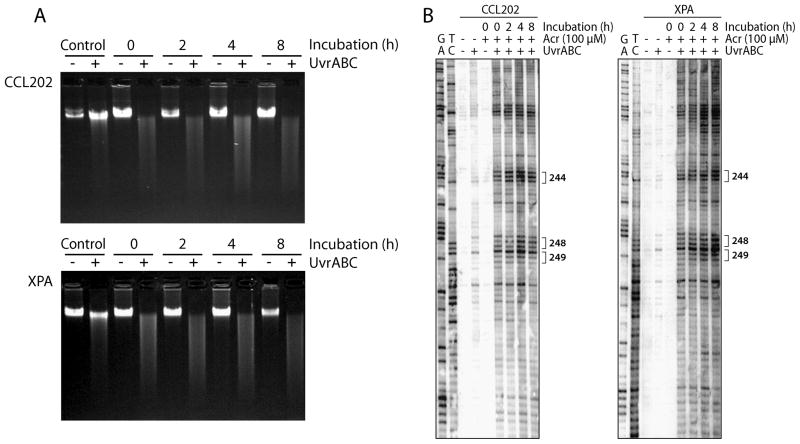Figure 8.
Lack of repair of Acr-induced DNA damage in the p53 gene (A) as well as in genome overall (B) in normal human NER proficient NHLF (CCL-202) and NER deficient XPA cells. Exponentially growing cells at 70% confluency were treated with Acr (100 μM) for 6 h, then incubated in fresh medium without Acr for 0, 2, 4, and 8 h. The genomic DNAs were isolated and reacted with UvrABC which can cut Acr-dG adducts [9, 11]. Acr-DNA adducts formed in exon 7 of the p53 gene were mapped at the nucleotide level by the UvrABC-LMPCR method as previously described [9]. Note: Acr-DNA adducts were not repaired at the genome level and at the codons 244, 248 and 249 of the p53 gene.

